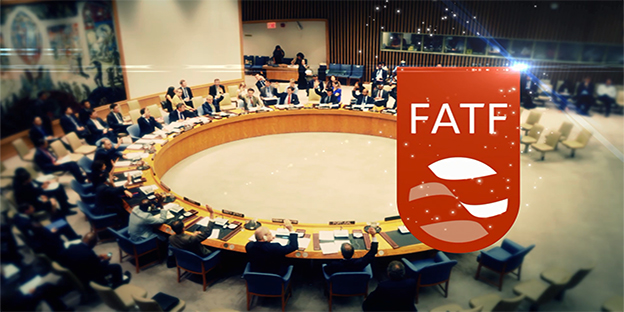KARACHI: The Financial Action Task Force’s (FATF’s) committee may put the country’s transactions on its grey list, but the decision is not going to disrupt economic growth as the country faced the same restrictions back in 2012-15, market analysts said. The committee may provide more time to Pakistan as the Securities and Exchange Commission of Pakistan (SECP) has prepared its details of regulations to be presented to the committee by the acting Finance Minister Shamshad Akhter.
Dr Shamshad Akhtar reached Paris on Monday along with officials of the financial monitoring unit including SECP officials to counter Pakistan’s case in the (FATF) meeting.
Sources said the Pakistani delegation will apprise the meeting regarding steps taken by Pakistan to stem money laundering and terror financing, and put up a robust case on not placing its name on the “grey list”.
FATF wants Pakistan to take action against the illegal financing of Hafiz Saeed and his activities. The United States government has also complained about his activities in Pakistan.
The analyst said, “Pakistan is still seen as wielding influence in Afghanistan and the return of the Taliban, therefore, the United States of America and other forces are using tactics to pressurise Pakistan to deliver results in Afghanistan.”
Pakistan has a perennial problem of documenting its economy and the informal economy is what scares all international financial regulators because activity generated in the informal economy could be used in activities that could be of concern for the FATF.
A Topline research report said, “the meeting will conclude with the third and final Plenary meeting on 27-29 Jun 2018, where they will officially place Pakistan on the ‘Improving Global Anti Money Laundering (AML)/ Countering Financing of Terrorism (CFT) compliance’ list also known as the ‘grey’ list’.” This list comprises of jurisdictions with strategic AML/CFT deficiencies for which they have developed an action plan with the FATF.
To simplify, as per our understanding, countries that are identified as having deficiencies in their financial system are placed on ‘grey list’ (Improving Global AML/CFT Compliance: On-going Process) while countries that are not making sufficient progress in addressing the deficiencies or have not committed to an action plan (Public Statement-call for action) are then moved to ‘blacklist’ and are termed as high-risk jurisdictions.
The report said, though FATF did not officially announce Pakistan’s placement on the grey list, the US and the UK had jointly moved the FATF in Feb 2018, nominating Pakistan for placement on the grey list and were subsequently joined by France and Germany.
To comply with the FATF requirements, the National Security Committee (NSC) of Pakistan on June 8, 2018, reaffirmed its commitment to cooperate with FATF while SECP issued Anti Money Laundering and Countering Financing of Terrorism Regulations (2018), on June 20, 2018.
Since a comprehensive action plan has already been submitted, the Topline Report believes that chances of Pakistan to be placed on the blacklist in the on-going FATF meeting (24-29 Jun) is least likely (contrary to market expectations), as only those countries are moved to blacklist that does not make sufficient progress or fail to provide an action plan.
The analyst also downplay concerns of an adverse impact on Pakistan’s economy due to its inclusion in the blacklist (in case Pakistan fails to satisfy FATF) as Pakistan was previously part of high-risk jurisdictions (blacklist) in 2008 and 2012 while it was under jurisdictions that were making sufficient progress (grey list) in 2010 and 2014. Pakistan was removed from the grey list in 2015.
Though Pakistan’s inclusion in blacklist may hurt its standing in the international landscape, it will not be as severe as recently been portrayed on the media. This is because when Pakistan was part of the greylist/blacklist (2008-2015), it successfully approached multilateral bodies, floated international bonds and had other international trades.
Currently, FATF has officially designated ten countries under High-risk jurisdictions (blacklist) and Jurisdictions that are making sufficient progress (greylist). There are eight countries under FATF’s greylist (Ethiopia, Iraq, Republic of Serbia, Sri Lanka, Syria, Tunisia, Vanuatu, Yemen and two countries under blacklist (Iran & North Korea).
The decision to place Pakistan on the global money-laundering watchdog’s grey list was made during a FATF plenary meeting in February this year.
The anti-money laundering and countering financing of terrorism regulations 2018 “are fully compliant with the Financial Action Task Force (FATF) recommendations, which are mandatory to adopt for Pakistan as a member of the Asia Pacific Group on Money Laundering,” SECP said in a statement.
“The committee reaffirmed the commitment of the country to work with FATF and other international organisations in achieving common goals and shared objectives,” a statement issued by the Prime Minister Office on the NSC meeting said.
























